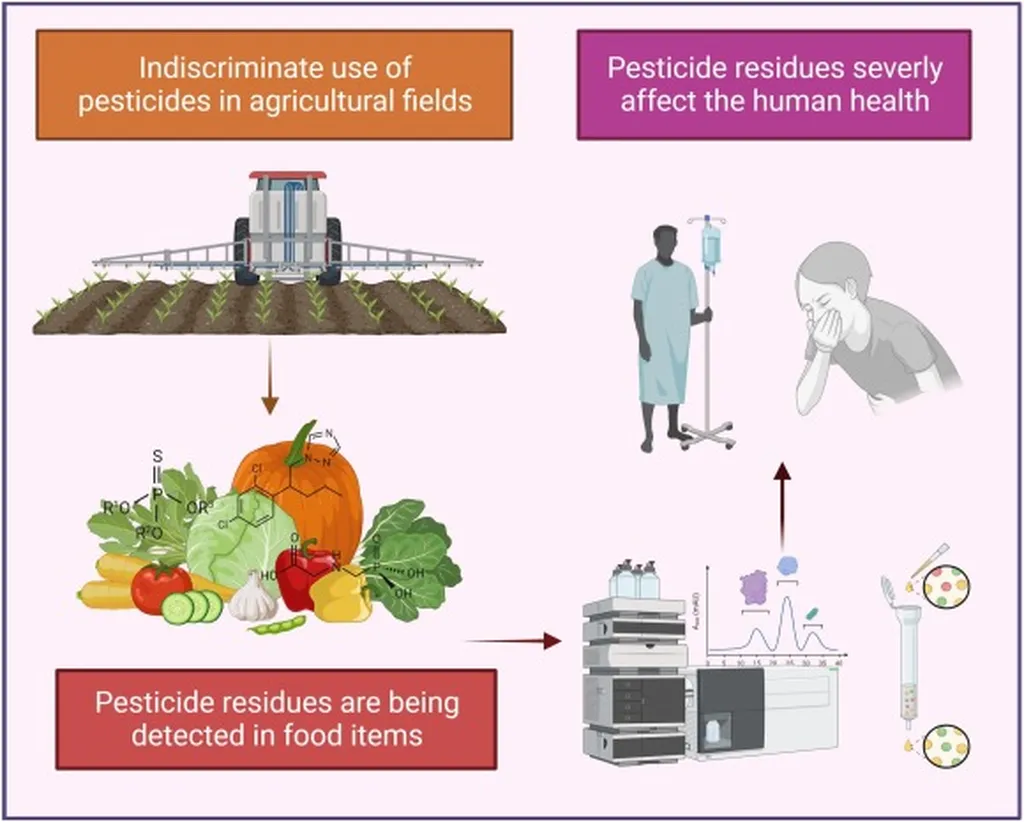In the realm of food safety and agricultural technology, a groundbreaking study has emerged, poised to revolutionize the detection of organophosphorus pesticides (OPPs) in our food supply. Led by Mahdi Ghorbani from the Department of Chemistry at Ferdowsi University of Mashhad in Iran, this research introduces a novel approach to pesticide analysis, leveraging advanced materials and innovative techniques to enhance sensitivity and reliability.
The study, published in ‘Food Chemistry: X’ (translated to ‘Food Chemistry: New Horizons’), compares two engineered sorbents for dispersive micro-solid phase extraction (D-μ-SPE) prior to gas chromatography–mass spectrometry (GC–MS). The sorbents in question are Bimetallic Fe/Co-MIL-88A and a novel Bimetallic Fe/Co-MIL-88A-on-MIL-88B composite. Both demonstrated high extraction efficiencies, but the composite stood out for its exceptional reusability and sustained performance over multiple cycles.
Ghorbani explained, “The composite sorbent’s ability to maintain its performance over five consecutive cycles is a significant advancement. This reusability not only reduces costs but also enhances the practicality of routine monitoring in food safety laboratories.”
The research employed a design of experiments (DoE) approach to optimize key extraction parameters, achieving remarkable sensitivity and precision. The method boasts an impressive linear dynamic range (LDR) of 0.07–900 ng mL−1, with detection limits as low as 0.02–0.09 ng mL−1. Additionally, the method demonstrated high enrichment factors (up to 67) and excellent reproducibility (RSDs 3.16–4.35%).
The practical implications of this research are substantial. Analysis of vegetable and fruit juice samples yielded robust recoveries (93.5–103.6%) with precision (RSDs 4.37–6.33%), affirming the method’s reliability for routine monitoring. This advancement ensures enhanced consumer protection and contributes significantly to food safety surveillance.
Ghorbani further elaborated, “Our method provides a robust and reliable tool for the routine monitoring of OPPs in various food matrices. This is crucial for ensuring food safety and protecting public health.”
The commercial impacts of this research are far-reaching. In the agricultural sector, the ability to detect and monitor OPPs with such precision can lead to more informed decision-making regarding pesticide use, ultimately promoting safer agricultural practices. For the food industry, this method offers a reliable means of ensuring product safety, thereby enhancing consumer trust and marketability.
Looking ahead, this research paves the way for future developments in the field of food safety and analytical chemistry. The novel MOF-on-MOF composite sorbent holds promise for further applications in environmental monitoring and other areas requiring high-sensitivity detection.
As the global focus on food safety continues to intensify, innovations like this are crucial. They not only advance our analytical capabilities but also contribute to the broader goal of ensuring a safer and healthier food supply for all.

